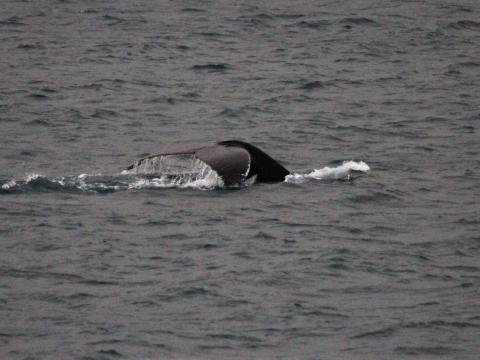Feeding behavior of whales
- Baleen whale filtering system
Humpbacks in hunting mode usually take a good dive, by lifting their fluke and swimming down to the deep for food. Once they have found their prey, usually krill or small fish like mackerel, they increase their speed and just before they reach their prey, they open their mouth and because they are under water, the sea and the fish gets sucked into their mouth. The "lines" under the lower jaw which stretches down to the whale’s stomach helps the skin stretch like a harmonic so the whale can absorb so much water and food into the mouth and close it. Whales that have skin like this are called Rorqual.
The volume of the water + the food absorbed by the whale can be huge and sometimes more than the volume of the whale itself. Since baleen whales do not have teeth, but instead baleens, the whale now uses its muscles in the belly and its huge and powerful tongue to push the water throughout the baleens. Using the baleens like a sieve, a kind of filtering system that only lets water through, but the fish and krill remains in the whale’s mouth, for the whale to swallow.
This action unfolds very quickly: a blue whale can engulf 100 tonnes of water in under 10 seconds!
A sensory organ located between the two bones of the lower jaw sends a nerve signal as soon as the mouth begins to open. Then stretchy nerves control the contraction that allows the water to be expelled through the mouth. Composed of elastic fibres to stretch and collagen to solidify, nerves can more than double in length, stretching from 14 cm to 34 cm.









